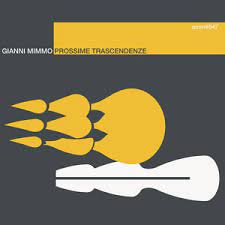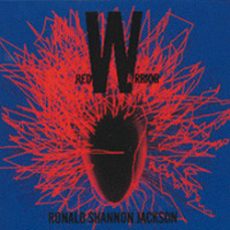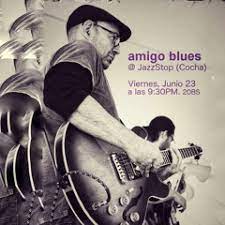
Daily Dose Of Jazz…
Gianni Mimmo was born on February 13, 1957 in Pavia, Italy. He developed a unique blend of abstract lyricism and contemporary flavours and has built an international reputation for his unique treatment of musical timbre and his exploration of the advanced techniques on the soprano saxophone. His peculiar work is mainly focused on the relationship among distant artistic declinations and his style is based on a deep knowledge of the instrument and on a sound consciousness which is the constitutional element of his voice.
As composer he often works with graphic scores where elements coming from different musical languages find a new form where fragments and more unbound ideas ask for a fresher interpretation and performing responsibility.
His pantheon is pretty crowded and includes several names coming from art, music and philosophy: painters like Jackson Pollock, John McLaughlin, Toti Scialoja, Mario Sironi, Felice Casorati; adventurous jazz musicians like Steve Lacy, Roscoe Mitchell, contemporary souls like John Cage, Robert Ashely, Earle Brown, philosophers and beautiful minds like Giorgio Agamben and John Berger, writers like Yasunari Kawabata and Herman Melville, poets like Marina Cvetaeva and Wisława Szymborska.
He has numerous current projects and extensively tours in Europe and USA invited by international festivals and venues. In addition, he runs the indie label Amirani Records. Saxophonist and composer Gianni Mimmo continues to perform, compose and record.
More Posts: bandleader,composer,history,instrumental,jazz,music,saxophone

Daily Dose Of Jazz…
Ron Horton was born on February 12, 1960 in Bethesda, Maryland and attended Berklee College of Music from 1978 to 1980. He moved to New York City two years later where, as a longtime member of Jane Ira Bloom’s band (1983-2000), he became an integral part of the jazz scene.
Since 1992 Ron has been a member of the New York Jazz Composers Collective and the Herbie Nichols Project under Frank Kimbrough and Ben Allison. From 1998 to 2003 he was also a member of Andrew Hill’s sextet, and appeared on his album Dusk (1999).
Horton worked as a sideman with Ted Nash, Allan Chase, Bill Mays, Jon Gordon, Andy Laster, Phillip Johnston, Matt Wilson, Roberta Piket, Rez Abbasi, Walter Thompson, Pete Malinverni, Jamie Baum, Bill Gerhardt, Rich Rosenzweig, John McKenna, Michael Jefry Stevens, Peggy Stern and others.
He has given master classes and workshops at The New School in New York, the New England Conservatory of Music, the University of North Carolina, and Oxford University.
Trumpeter Ron Horton, who released his debut album as a leader in 1999, continues to perform and record.
More Posts: bandleader,educAATOR,history,instrumental,jazz,music,trumpet

Daily Dose O fJazz…
Ronald Shannon Jackson was born on January 12, 1940 in Fort Worth, Texas and as a child he was immersed in music. His father monopolized the local jukebox business and established the only African American-owned record store in the metropolitan area. His mother played piano and organ at their local church. Beginning at age five until nine he took piano lessons and in the third grade he studied music with John Carter. He graduated from I.M. Terrell High School, where he played with the marching band and learned about symphonic percussion. By the age of 15, he was playing professionally. His first paid gig was with tenor saxophonist James Clay.
Attending Lincoln University in Jefferson City, Missouri gave him access to St. Louis, Missouri and the musicians touring the Midwest. His roommate was pianist John Hicks and his bandmates also included Lester Bowie and Julius Hemphill. Transferring first to Texas Southern University, then to Prairie View A & M before landing at the University of Bridgeport in Connecticut studying history and sociology. In 1966, through trumpeter Kenny Dorham he attended New York University on a full music scholarship.
Once in New York City he performed with many jazz musicians, including Charles Mingus, Betty Carter, Jackie McLean, Joe Henderson, Kenny Dorham, McCoy Tyner, Stanley Turrentine, Charles Tyler and Albert Ayler. By 1975 he joined Ornette Coleman’s electric free funk band, Prime Time, where he learned composition and harmolodics. He would go on to play Paris, France, record four albums with Cecil Taylor, and formed his band, The Decoding Society, in 1979. In addition to leading Decoding Society lineups, guitarist James Blood Ulmer recruited Ron for another group.
Continuing to push the envelope over the next few years he formed several groups including Last Exit, SXL, Mooko, and Power Tools. Jackson joined trumpeter Wadada Leo Smith’s Golden Quartet, then played with the Punk Funk All Stars, and toured Europe with The Last Poets. In 2011 he formed a power trio called Encryption.
Drummer Ron Jackson who recorded nineteen albums as a leader, six with Last Exit and as a sideman fifteen with Albert Ayler, James Blood Ulmer, Cecil Taylor, SXL, Music Revelation Ensemble, and Ornette Coleman, died of leukemia on October 19, 2013, aged 73.
More Posts: bandleader,history,instrumental,jazz,music,percussion

Daily Dose Of Jazz…
Eugene Chadbourne was born January 4, 1954 in Mount Vernon, New York but grew up in Boulder, Colorado. He started playing guitar when he was eleven or twelve, inspired by the Beatles and hoping to get the attention of girls. Although he was initially drawn to Jimi Hendrix and played in a garage band, he found rock and pop music too conventional. Gravitating to the avant-garde jazz of Anthony Braxton and Derek Bailey, it was the former musician who persuaded him to abandon his journalism endeavors and pursue music.
During the early 1970s, he lived in Canada to avoid military service in the Vietnam War. Returning to the United States, he moved to New York City and played free improvisation with Henry Kaiser and John Zorn. Around this time, he released his first album, Solo Acoustic Guitar. In the early 1980s, he led the avant-rock band Shockabilly with Mark Kramer and David Licht.
He explored other genres, playing with a Cajun band, a Russian folk band and mixed country, western, and improvisation in the band LSD C&W. For many years Eugene was in a duo, and then worked with Han Bennink, Fred Frith, Elliott Sharp, and Charles Tyler..
Chadbourne invented an instrument known as the electric rake by attaching an electric guitar pickup to a rake. He played a duet of electric rake and classical piano with Bob Wiseman on his 1991 album Presented by Lake Michigan Soda. He also played the instrument on a Sun Ra tribute album.
Banjoist, guitarist and music critic Eugene Chadbourne, who has recorded 39 albums as a leader, continues to perform and record.
More Posts: bandleader,banjo,critic,guitar,history,instrumental,jazz,music

Daily Dose Of Jazz…
Cristian Amigo was born on January 2, 1963 in Santiago, Chile and emigrated with his family to the United States as a child. At twelve he began studying music with Joseph Torello in New Haven, Connecticut. Two years later the family moved to Miami, Florida where he began performing professionally with Six Feet Under, a rock band he formed. While attending Hialeah-Miami Lakes Senior High School he taught classes in guitar to his peers and took courses in music theory, classical guitar and jazz at Miami-Dade Community College.
By the time he turned 17 he was in the music program at Florida State University studying classical guitar. With an Associate of Arts diploma he returned to Miami, began actively performing in recording sessions and original and cover bands while attending music classes at University of Miami. His first recording session at 17 was producer Narada Michael Walden’s We Don’t Have To Take Our Clothes Off.
He moved to Los Angeles, California and earned his bachelor and master degrees and studied jazz with Kenny Burrell and Gary Pratt, and the sitar with Harihar Rao. He studied composition with Wadada Leo Smith. While a university student Amigo made a living as an assistant travel agent, a janitor, a session guitarist, band leader, music producer, film composer, jingle producer, concert producer, music teacher and performed in a number of bands.
He worked as a session guitarist with artists including Hans Zimmer, Mark Mancina, Jay Rifkin, Les Hooper, Wadada Leo Smith, David Ornette Cherry, John Van Tongeron, Justo Almario, and others.
His awards include the John Simon Guggenheim Fellowship in music composition, a Senior Fulbright Scholar/Teacher/Artist Award and the Van Leir Fellowship from Meet the Composer. His work has been supported and/or produced by numerous New York organizations, the Danish Arts Council, Smithsonian Institution Center for Folklife and Cultural Heritage and others too numerous to mention.
Guitarist and composer Cristian Amigo continues to compose, perform and record.
More Posts: guitar



